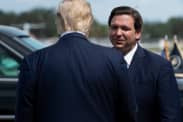It appears to be the best of times and worst of times for Wall Street hedge funds.
But for the biggest active fund managers, it is decidedly a poor stretch of comparative performance, according to data from J.P. Morgan, which indicates that returns against a benchmark, known as alpha in the parlance of investment managers, were the worst since 2011 and particularly abysmal for large hedge funds.
“This poor performance appears to be driven by the bigger funds. 2020 represents the worst year since records began in 2005 in terms of the underperformance of big hedge funds relative to the smaller ones,” wrote analysts at J.P. Morgan’s global quantitative team, led by Nikolaos Panigirtzoglou.
“This year’s poor hedge fund performance appears to be driven by the biggest funds. For example, for Equity Long/Short hedge funds, while the HFRI Equity Hedge Asset Weighted index delivered a return of 3.7% for the year to November, the Equally Weighted average return was positive at 11.6%,” the analysts wrote.
The team says that in their calculations “the gap between [quantitative] and non-Quant hedge fund performance has been very negative this year for a second year in a row.” The researchers said that quant styles like risk parity, an investment strategy that shifts stock and bond holdings according to volatility; those driven by commodity trading advisers, or CTAs, that bet on market trends and patterns, and equity market neutral hedge funds that attempt to limit overall risk, were some of the worst underperformers, helping to drag down the lot.
“In a year where equities posted double-digit returns and with bonds returning more than 5%, the hurdle for alpha generation by active investors has been high,” the J.P. Morgan analysts wrote.
Indeed, the Dow Jones Industrial Average
DJIA,
The technology-laden Nasdaq Composite Index
COMP,
J.P. Morgan says that the weakness in hedge fund performance compared against the broader market can be attributed to deterioration in market liquidity and trading conditions this year, “which in turn acted as a greater headwind for bigger hedge funds given the size of their positions.”
The analysts also note that those large quant funds’ models may have been slower to adjust to the pandemic than discretionary managers, likely failing to adjust their risk asset positions fast enough to take advantage of the sharp market selloff during March and the subsequent rapid recovery.
Overall, hedge funds enjoyed a record-setting period of gains in the aftermath of the selling induced by the COVID-19 pandemic nearly nine months ago.
Hedge Fund Research’s HFRI 500 — an equal-weighted index of the world’s largest hedge funds’ returns — soared 6.2% in November from October, marking the biggest monthly gain since December 1999.
Despite the weakness shown in the large funds, the New York Post reported that some $13 billion flowed into hedge funds in the third quarter of 2020, with the velocity of funds at its peak ahead of the contentious U.S. election between President-elect Joe Biden and incumbent Donald Trump and as the virus raged.







